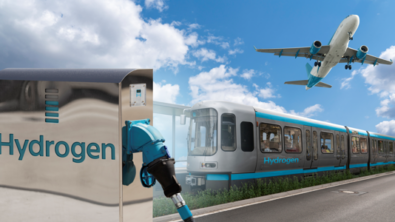The sound of hydrogen combustion CFD
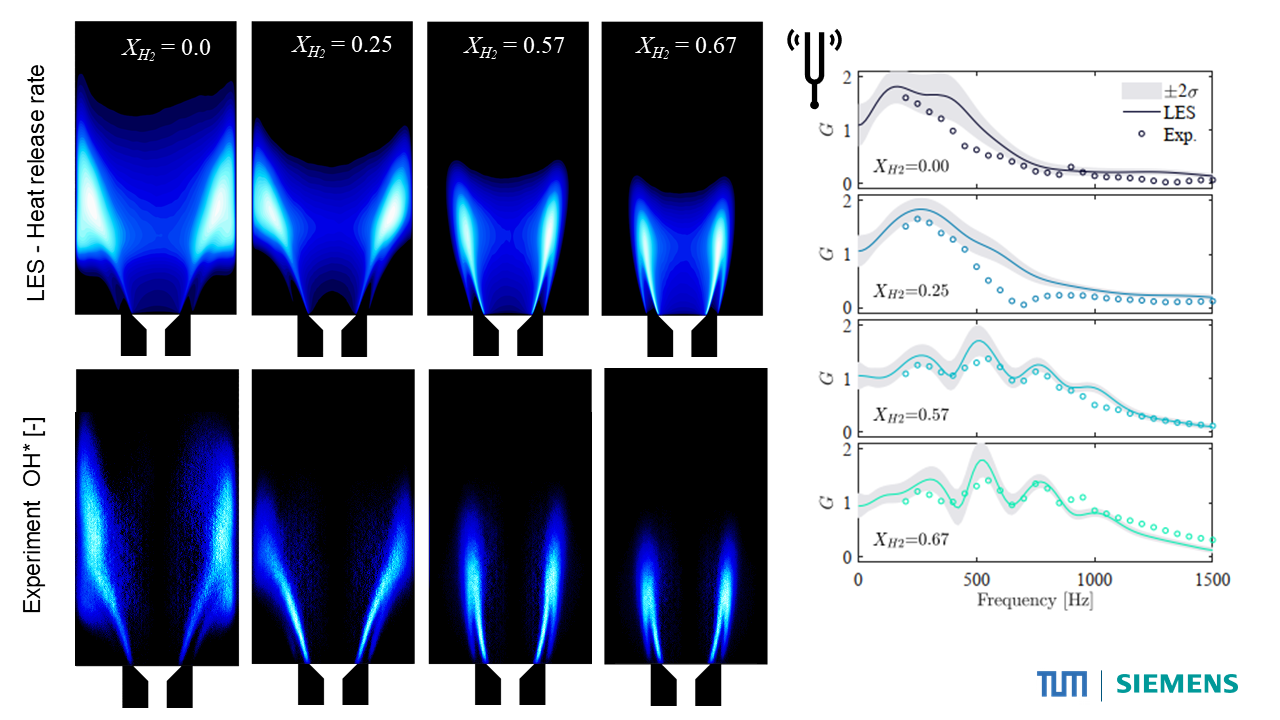
What do (combustion) engineers and the Beach Boys have in common?
They care about “Good Vibrations”.
Hydrogen Combustion – Stable or not stable, that is the breaking question
The challenges of ensuring thermoacoustic stability are still on top of the (priority) charts for combustion system designers. Now, adding hydrogen to conventional fuels is a major trend in order to meet emission and CO2 requirements. But the addition of hydrogen to conventional fuels strongly impacts the thermoacoustic response of combustion systems. And hence, things have become even more complex. Something that was stable before may now be unstable! A major headache. A headache that only hydrogen combustion CFD with thermoacoustics can resolve.
The singing flame
For the Beach Boys, good vibrations were related to unmeasurable, esoteric, cosmic vibrations. For engineers good, i.e., stable, or dampening vibrations are very real. But more importantly, the identification of bad, i.e., unstable vibrations are critical in the design of many combustion systems. To keep it with the Doors, only then will we safely ask, “Come on baby light my fire”.
To explain the relationship between acoustics, combustion, and good design we need to go back further in time. From the swinging ‘60s to 1777. Around this time the “chart-toppers” would be more Mozart and Bach than the Beatles or Rolling Stones. It was also around this time that a guy named Dr. Higgins made his own music. By burning hydrogen in an open-ended tube Higgins created a “singing flame”. What Higgins had demonstrated was an early example of thermoacoustics. He observed the interaction between heat release (typically the flame of a combustion process), flow perturbations and acoustic oscillations.
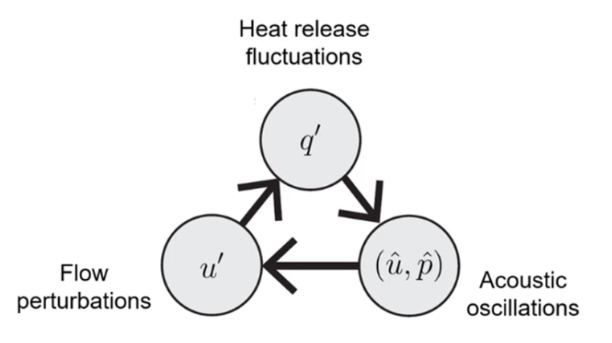
So why is this of concern to our combustion engineers?
Well, after lighting that fire, it comes back to the good and bad vibrations. If the acoustics of the combustion system and the unsteady heat-release are in-phase, these instabilities can continue to grow. Ultimately they may generate large-amplitude oscillations. The results range from melted components to catastrophic damage. Many combustion systems such as rockets, gas turbines, aero-engines and boilers. It is the combustion engineer’s challenge to understand and mitigate these vibrations. That is the only way to allow for the safe, reliable, and efficient operation of their product.
Simulation of thermoacoustic instabilities
As with the design and engineering of any product, reducing the risk of these thermoacoustic instabilities as early as possible in the design phase is highly desirable. This is true regardless of the fuel but the risk rises as we will use more hydrogen in fuel blends of the future. Using simulation avoids expensive rig tests or even more expensive in-service management of issues. Simulation of thermoacoustic interactions can be complex and resource intensive. This high demand results in solution strategies that range from 1D networks to high-fidelity Large Eddy Simulations (LES). An intermediate option is to use an acoustic wave Helmholtz solver. This solver is much cheaper than a full LES study, whilst being able to capture geometric details that a 1D network approach cannot fully represent. Hence it is the perfect candidate for thermoacoustic hydrogen combustion CFD.
The acoustic Modal Solver – jamming with hydrogen combustion CFD
Not just since yesterday, Simcenter STAR-CCM+ is a swiss knife when it comes to reactive flow and combustion CFD.
Building on this strong foundation, with the just released Simcenter STAR-CCM+ 2206 we have introduced an acoustic wave Helmholtz solver: the Acoustic Modal Solver. The new solver allows for rapid assessment of thermoacoustic stability. Using the flow field from a steady state solution, users can run the Acoustic Modal Solver as a post-processing step to provide the resonant frequencies and mode shapes of the combustion system – whether it is hydrogen combustion CFD or not. An n-tau model considers the impact of thermoacoustics, by assuming that the heat release fluctuations relate to a time lag (tau) of the upstream flow perturbations. The example below shows the mode shapes of a v-shape combustor visualized using a solution from the Acoustic Modal Solver.
Ultimately, this allows for quick insight into the stability of the predicted modes – hopefully showing a well-designed combustion system with our good vibrations i.e. stable modes.
Lean premixed flames with methane – hydrogen combustion CFD
Simcenter STAR-CCM+ is being used to investigate the dynamics of lean premixed flames with methane-hydrogen blends as part of the POLKA (Pollution Know-how and Abatement) consortium [1]. LES simulations of a bluff-body stabilized burner [2] have been successful in predicting the impact of hydrogen addition on flame shape and length [3].
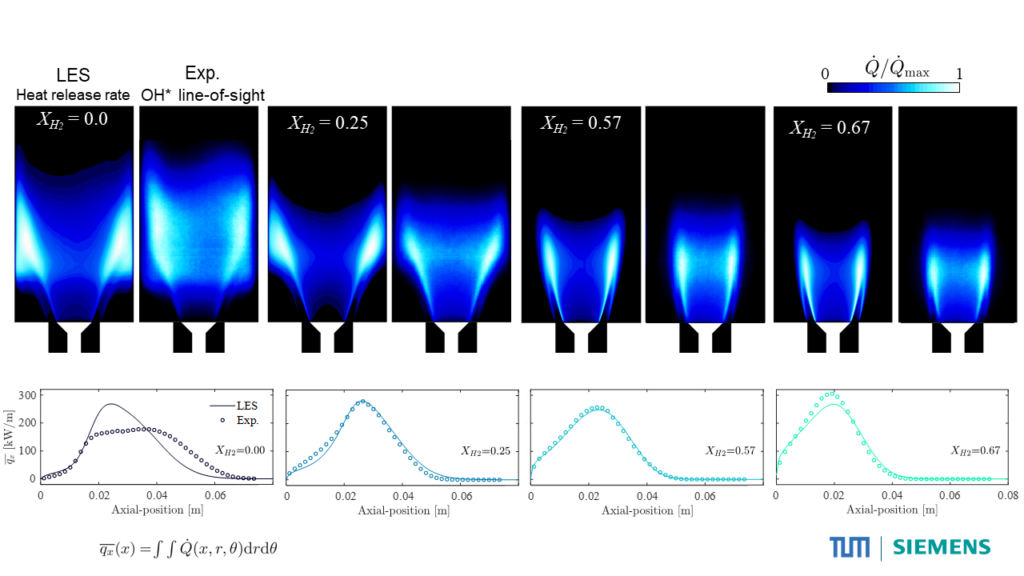
As well as this, thermoacoustic behavior is well predicted. The flame transfer function (FTF) is commonly used to describe the response of flames to acoustic instabilities. Once again, the impact of hydrogen addition is well predicted using Simcenter STAR-CCM+ as seen by the FTFs predicted below:
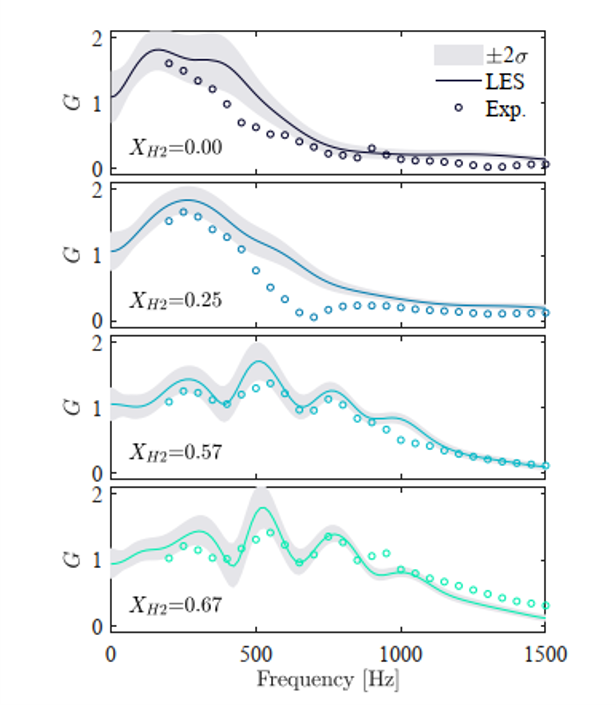
Encore – thermoacoustic behavior of gas turbines
Do we have time for an encore? Let me present one final smash hit, this time featuring Siemens Energy. They have been using Simcenter STAR-CCM+ to assess the thermoacoustic behavior of their gas turbines. Read all about their successes here.
The show must go on
The show must go on, and Siemens Digital Industries Software is committed to providing best in-class solutions to the challenging world of thermoacoustics.
Now that is music to my (and hopefully your) ears!
[1] Alex Garcia is enrolled in a PhD program with Siemens and TU Munich in the framework of MSCA POLKA project (https://www.polka-eu.org/ – grant agreement no 813367)
[2] Thanks to NTNU for the valuable information and experimental data provided
[3] Garcia, A., M. et al, “Large eddy simulation of the dynamics of lean premixed flames using global reaction mechanisms calibrated for CH4-H2 fuel blends” submitted to Physics of Fluids


